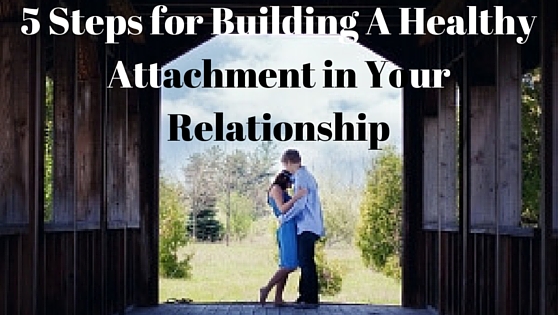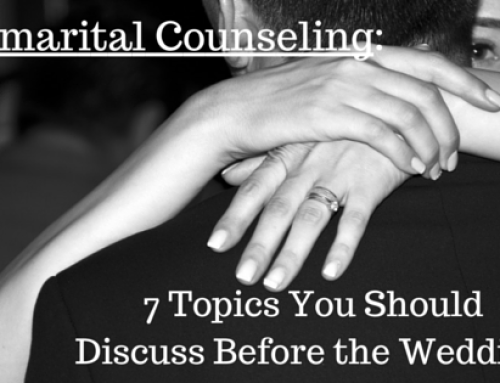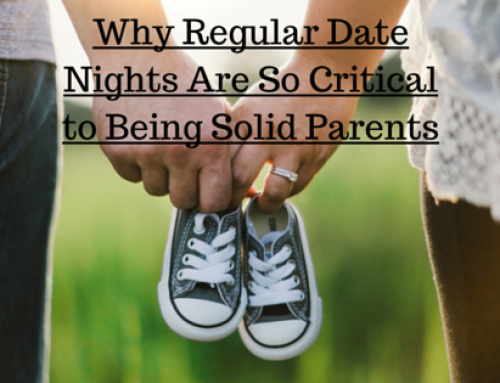Our internal programming, from day one, is to seek out healthy attachment – the warmth, care, and connection we hopefully experienced in the womb. We’re better when we’re loved, and we know it. We are free to relax into each other – safe enough to grow and explore. We are happily connected.
Are you secure in the care and responses of your partner? Or are you hoping to begin a journey that puts aside insecurity in your relationship?
Congratulations! Forming loving bonds is a beautiful thing in either case.
Healthy attachment can be further insurance for a good relationship, or can make a challenging relationship better. So, how do you go about developing a healthy connection?
Consider the following steps:
1. Identify Your Attachment Styles.
You can begin by reading up on attachment theory (see my previous post). Become familiar with the four primary attachment styles and how they tend to play out in relationships, especially under stress.
Take a close look at your childhood and the connections you had with your primary caregivers. Learn to recognize how your emotional reflexes, expectations, perceptions, and behaviors may stem from any early insecure attachment bonds.
It’s important to be honest here, and gentle. Remember that your childhood caregivers were human – they were likely doing the best that they could do with the skills and resources available to them. And, they may not have met all of your needs, or all of your hopes, as well as you would have liked.
Being honest means looking at the whole picture, through as unbiased a lens as you can. Being gentle means having compassion for yourself and your own relational wounds, as well as for those who took care of you and their relational wounds.
2. Seek Support in Couples Therapy.
To build something new and solid, it’s often helpful to enlist the support of an expert. A therapist, familiar with attachment theory and trained to help couples develop a more satisfying and secure union, will be a significant ally.
A therapist can view your relationship from an outsider’s perspective, witness your relationship dynamics playing out, provide support and in-the-moment suggestions, and help you and your partner see things from the other’s point of view. These practices can help develop empathy and a better understanding of how attachment wounds may have led to challenges in in your relationship.
It’s important to have skilled help navigating attachment and communication issues.
3. Use your words.
Healthy attachment in your adult relationship is heavily dependent on strong communication. Though it may seem difficult or even foreign at first, focus on your goal to be secure with your partner.
Start with the positive. Share your gratitude for your life together, and for the little things your partner does to try to help increase connection with you or make your life easier. Everyone needs to feel seen and appreciated. Talk about a dream or goal you’ve been contemplating together, and think of ways to help make that future a reality. Then start taking those steps forward, and building your future as a couple.
With challenges, start small. Start early. And keep talking. Address hurts and annoyances before they grow into major relational issues. Don’t expect your partner to figure out what’s going on for you inside of your head. Tell him or her. Use clear, kind, direct language until you feel like the issue is resolved.
And try a little pillow talk. Scientific studies show that interactions following intimacy help foster feelings of safety and confidence in a relationship.
4. Improve Nonverbals. Reach out and Touch.
Insecure attachments in infancy often result from your caregiver’s lack of attunement or insensitive responses towards your nonverbal signals. As a result, you may be someone who tends to misread and miscommunicate nonverbal cues today.
Try improving the way you receive and respond to your partner’s nonverbals by first becoming more aware of your own emotions and reactions and how they influence you. Often, this means tuning in closely to the physical sensations that accompany your emotions. Does your stomach tighten up when your partner uses a certain tone of voice? Does your jaw clench when you see that your partner forgot to do that same thing again? What other sensations are you aware of, and do those sensations shift over time?
Then, develop trust by attempting to send your own, accurate signals – both nonverbal and verbal – to your partner. Reflect your true emotions, by showing that you hear, notice, and care.
Well-known therapist, Sue Johnson also notes that loving relationships “demand the reassurance of touch” in her book, Hold Me Tight. To build attachment, you and your partner must be completely secure in the knowledge that you are emotionally and physically there for each other.
Life, in all its pain and unpredictability, is much more tolerable and enjoyable if you pat each other on the back, hold each other, and make love to each other through it all.
5. Resist Pseudo-self-sufficiency by Erecting a Relationship Safety Zone.
Surrender your tendency to shut yourself down or shut out your partner.
A secure, healthy attachment allows individuals to turn to each other for comfort and support. Recognize that any retreat from your partner may be rooted in misperceptions about power, pride, or vulnerability.
Instead, look for ways to pay attention to your insecurities and fears. Learn to express them honestly and respectfully to your partner. Strengthen your relationship by facing the threat of disconnection together, rather than avoiding, or exacerbating detachment. Erect a relationship safety zone.
Stan Tatkin, clinical psychologist and author of Wired for Love: How Understanding Your Partner’s Brain and Attachment Style Can Help You Defuse Conflict and Build a Secure Relationship, calls this concept a “couple bubble.” The idea is to secure a healthier attachment to your partner by making a deliberate joint-decision to put the needs of your relationship ahead of your individual needs that don’t include your partner.
Your attachment becomes cemented as you decide to learn each other’s vulnerabilities, grow empathy between you, and act with kindness and love toward each other on a consistent basis.
For help with relationship challenges, seek the support of a solid couple’s therapist.








Leave A Comment